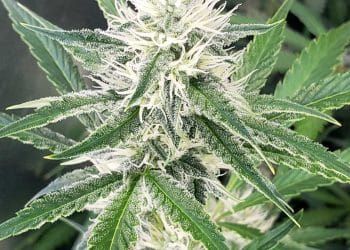Cannabis sativa L is a flowering plant that has been cultivated by humans for thousands of years. Its oil is especially valuable and has numerous applications in agriculture, medicine, and other industries. A close look at these oils gives us a view of substances that are rich in various chemical compounds, which explains C. sativa’s importance to humankind.
Researchers from the University of Pisa undertook a study that focused on the chemical compounds of oils extracted from eleven Cannabis sativa L. hemp genotypes using hydrodistillation. [1] The plants, five of which were monoecious and six dioecious, were cultivated during two seasons in an open-air setting. Differences, such as plant height and plant density, were noted between the two growing seasons and were attributed to the differences in rainfall between the two seasons.
The plants fell into three chemotypes: type III (CBD dominant/fiber type), type IV (cannabigerol (CBG) dominant), and type V (low/no cannabinoids).
Oil was extracted from the flowers of the eleven genotypes. After careful analysis, researchers were able to identify 116 compounds.
The predominant types of compounds found in all of the samples except one (the cultivar Felina 32) were sesquiterpenes, which were present in their hydrocarbon and oxygenated (terpenoid) forms. Sesquiterpene concentrations ranged from 47% to 79%. Abundant variations in sesquiterpene composition and expression existed and were caused primarily by differences in the conditions of each year of cultivation and genotype. The main identified compounds were β-caryophyllene, α-humulene, and their oxygenated derivatives; the oxygenated forms were more common in the first round of harvested plants.
The second-most abundant compounds were cannabinoids, other than in Felina 32, where cannabinoids represented the dominant chemical component at 53.4%. The three cannabinoids researchers were able to identify were cannabidiol (CBD), cannabichromene, and tetrahydrocannabinol (THC), with CBD being the most prevalent. CBG was not detected, likely due to its lower volatility, higher boiling point, and higher polarity.
Monoterpenes were poorly represented across samples. The researchers believe this occurred because they used dried flowers. The dominance of sesquiterpenes, including oxygenated forms, may also be explained through the drying and storing process.
As with the sesquiterpene content, the cannabinoid content and percentages varied markedly by genotype. Cannabinoid content also varied between the two growing seasons as well as at the intersection of both the aforementioned variables.
The researchers provided in-depth charts and tables of their findings, which includes a listing of the 100-plus compounds they identified and their percentages. It is their hope that the research contributes to the efforts of making high value-added byproducts from hemp. [1]
Image Source: D. Johnson
References:
- Peracci Y, et al. Essential oil of Cannabis sativa L: comparison of yield and chemical composition of 11 hemp genotypes. Molecules. 2021;26(13):4080. [Impact Factor: 4.411; Times Cited: 11 (Semantic Scholar)]











